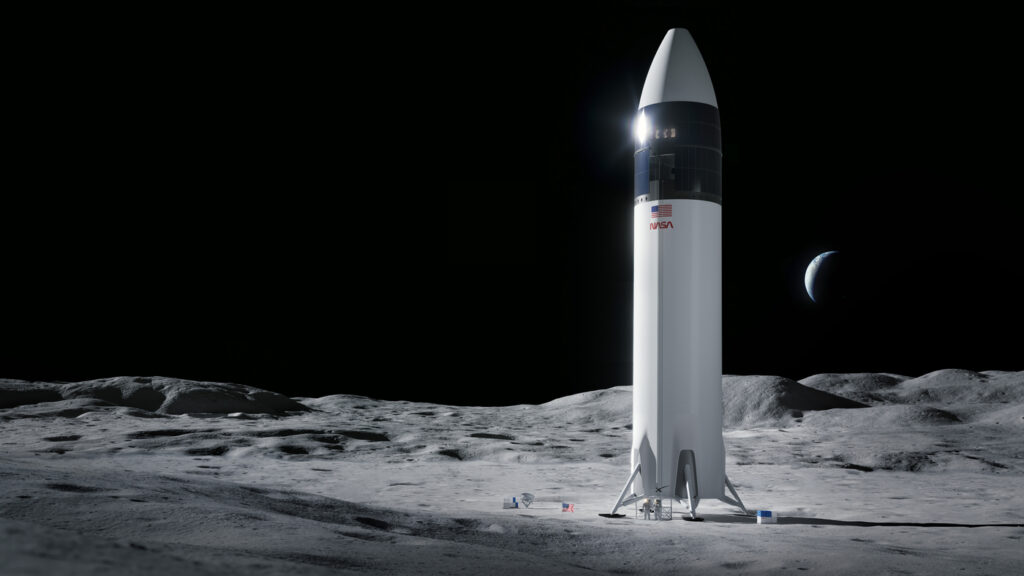There is a 70% chance that the Starship HLS spacecraft will be ready to land on the Moon by early 2028. Such information is given in a report published by the U.S. Government Accountability Office (GAO).

NASA is currently working on the preparation of two lunar missions. As part of the Artemis II expedition, four astronauts on the Orion spacecraft will fly around the Moon and return to Earth. The mission is currently scheduled to be realized in September 2025. Given that NASA has already successfully tested both the Orion spacecraft and the SLS rocket, chances are pretty good that Artemis II won’t encounter significant carryover.
But the situation with the Artemis III mission looks different. In its course, two astronauts will have to land on the south pole of the Moon using the Starship HLS spacecraft. The question of when exactly it will be ready for flight is the main stumbling block in the experts’ discussions. While SpaceX shows very significant progress on Starship testing, it is clear that a lunar version of the craft is unlikely to be ready by September 2026, the date Artemis III is scheduled to launch for now.
Apparently, NASA is also well aware of the conventionality of the date. This is evidenced by the recent GAO report, which cites the results of the evaluation of the Artemis III mission, conducted by NASA in December 2023. The organization’s experts set its baseline schedule for February 2028 with a joint confidence level of 70%. This means that there is a 70% chance that Starship will be ready to land on the Moon on this date. And, correspondingly, there is a 30% probability that Starship will fly even later.
NASA officials have already confirmed the numbers mentioned in the GAO report, saying they are based on a conservative approach that assumes a broad realization of risks. At that, the aerospace administration is not going to change the schedule just yet, and the Artemis III flight is still formally scheduled for 2026. A lot will depend on the results of tests for pumping cryogenic propellant in space, which is currently scheduled for 2025. This stage is a key one. To fly to the Moon, Starship HLS will need to be refueled in Earth orbit, which will require a significant number of flights by Starship tankers.
Earlier we told you that SpaceX planned to catch the Super Heavy booster during the next Starship test.
According to Spacenews


